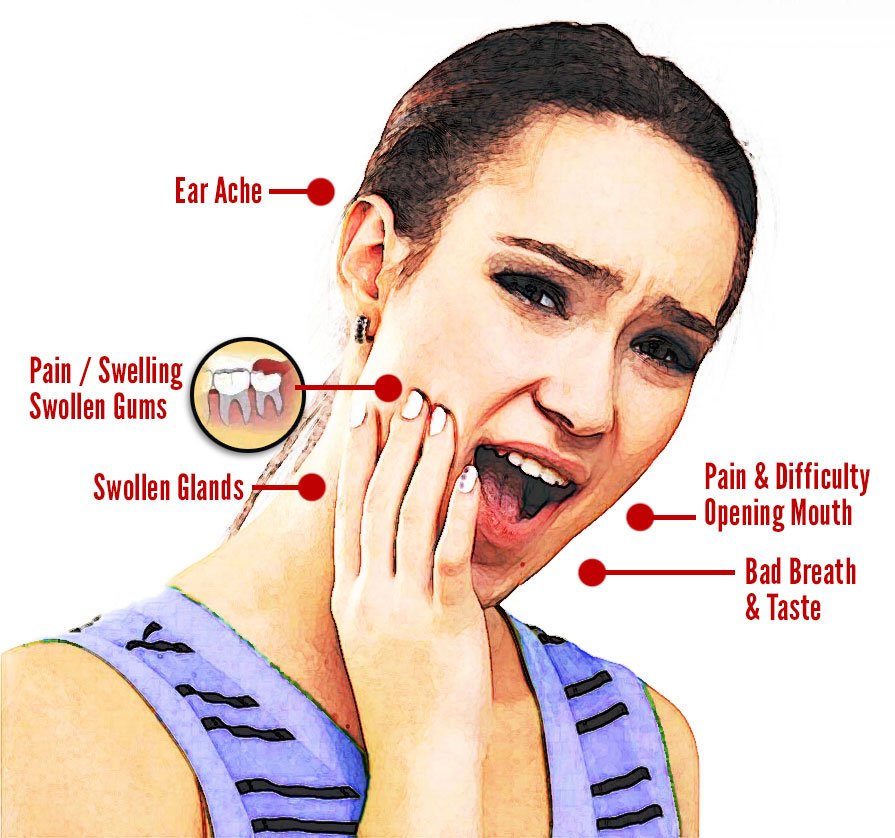Wisdom teeth removal, also known as third molar extraction, is a common dental procedure performed to remove one or more wisdom teeth that are causing problems or are at risk of causing issues in the future. Here’s an overview of the procedure and recovery process:
Procedure:
1. Consultation: The process typically begins with a consultation with an oral surgeon or dentist. They will examine your mouth, take X-rays, and discuss the need for wisdom teeth removal based on your dental health and any existing or potential issues.
2. Anesthesia: Before the procedure, you will receive anesthesia to ensure you are comfortable and pain-free during the extraction. The type of anesthesia used can vary, from local anesthesia to general anesthesia depending on the complexity of the extraction and your preference.
3. Extraction: The oral surgeon or dentist will then proceed with the extraction. If the wisdom teeth are impacted (trapped beneath the gums or jawbone), an incision may be made in the gum tissue to access the tooth. In some cases, the tooth may need to be divided into sections for easier removal.
4. Stitching: After the extraction, stitches may be placed to close the incision and promote healing. The type of stitches used can be dissolvable or require removal after a few days.
5. Postoperative Care:Once the procedure is complete, you will be given instructions on postoperative care, including managing pain, swelling, bleeding, and oral hygiene. You may also receive prescriptions for pain medication and antibiotics to prevent infection.
Recovery:
1. Immediate Aftercare:You will spend some time in the recovery area after the procedure, where your vital signs will be monitored. You may experience some grogginess or drowsiness from the anesthesia.
2. Pain Management: It is common to experience some discomfort or mild pain after the procedure. Over-the-counter or prescribed pain medication can help alleviate pain. Applying ice packs to the cheeks can also help reduce swelling and discomfort.
3. Swelling:Swelling is normal after wisdom teeth removal and typically peaks within 48 hours before gradually subsiding. Applying ice packs to the cheeks for 20 minutes on, 20 minutes off can help reduce swelling.
4. Diet: Stick to a soft or liquid diet for the first few days after surgery to avoid putting pressure on the extraction sites. Avoid hot, spicy, or hard foods that can irritate the surgical area.
5. Oral Hygiene: Continue to practice good oral hygiene by gently brushing your teeth and rinsing your mouth with saltwater as instructed by your dentist. Avoid vigorous rinsing or spitting, as this can dislodge blood clots and delay healing.
6. Follow-up Appointment: Attend a follow-up appointment with your dentist or oral surgeon to monitor your healing progress and ensure proper recovery. They will remove any non-dissolvable stitches and check for signs of infection or complications.
Conclusion:
Wisdom teeth removal is a routine dental procedure that can alleviate pain, prevent oral health issues, and protect surrounding teeth from damage. By following postoperative instructions and taking proper care of your mouth, you can ensure a smooth and speedy recovery process. If you have any concerns or experience unusual symptoms during recovery, don’t hesitate to contact your dentist or oral surgeon for guidance.






Comments